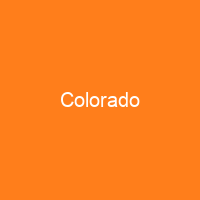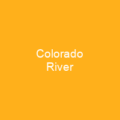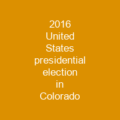Colorado: A State of Diverse Landscapes, Rich History, and Thriving Economy
Imagine a state where the landscape is as diverse as its history. Colorado, nestled in the Western United States, shares borders with Wyoming, Nebraska, Kansas, Oklahoma, Arizona, New Mexico, and Utah. Its geography is a tapestry of mountains, forests, high plains, canyons, plateaus, rivers, and desert lands. This state has been inhabited by Native Americans for at least 13,500 years, making it a land rich in cultural heritage.
From Indigenous Peoples to Statehood
The Apache and Comanche roamed the Eastern and Southeastern parts of Colorado, while the Arapaho and Cheyenne moved west from the Great Lakes region. The Spanish Empire claimed this territory as part of Nuevo México but eventually ceded it to the United States with the Louisiana Purchase in 1803. Zebulon Pike’s expedition in 1806 marked a significant moment, leading to conflicts over territorial claims.
Statehood and Beyond
On August 1, 1876, Colorado became the 38th state of the United States, earning it the nickname ‘Centennial State.’ Major cities like Denver and Colorado Springs drive its economy through government, defense, mining, agriculture, tourism, and manufacturing. The discovery of major silver lodes in 1878 triggered the Colorado Silver Boom, marking a period of rapid economic growth.
Conflict and Progress
The Civil War era saw many gold seekers holding sympathies for the Confederacy, but the majority remained loyal to the Union. The Sand Creek Massacre of 1864, where Colonel John Chivington led his troops into a massacre at Sand Creek, killing over 500 Cheyenne and Arapaho warriors, is a dark chapter in Colorado’s history.
Recovery and Growth
In the aftermath of the Civil War, prospectors returned to their homes but some stayed and developed mines, mills, farms, ranches, roads, and towns. The Union Pacific Railroad connected with the Central Pacific Railroad in 1869, forming the first transcontinental railroad. Rich veins of silver were discovered in the San Juan Mountains in 1872, leading to further economic booms.
Modern Colorado: A State of Diversity and Innovation
Today, Colorado is known for its diverse geography, which includes alpine mountains, high plains, deserts, and deep canyons. The state’s borders are defined by straight boundary lines with no natural features. Approximately half of Colorado is flat land, mostly prairies and deciduous forests, with precipitation averaging 15 to 25 inches annually.
Urban Centers
The Front Range Urban Corridor in eastern Colorado is home to roughly 70% of the state’s population, including Denver, Boulder, Fort Collins, Loveland, Castle Rock, and Colorado Springs. On the other side of the Rockies, significant population centers in western Colorado include Grand Junction, Durango, and Montrose.
Mountain Peaks
To the west of the Great Plains rises the eastern slope of the Rocky Mountains. Notable peaks include Longs Peak, Mount Blue Sky, Pikes Peak, and the Spanish Peaks near Walsenburg. The Rocky Mountains contain 53 true peaks and 58 named peaks that are 14,000 feet or higher in elevation above sea level.
Water and Climate
The Colorado Mineral Belt contains historic gold- and silver-mining districts of Colorado. The summit of Mount Elbert is the highest point in Colorado and the Rocky Mountains of North America at 14,437.6 feet elevation. Colorado is the only U.S. state that lies entirely above 1,000 meters elevation.
Climate Variability
The Continental Divide extends along the crest of the Rocky Mountains, with water flowing to the southwest via the Colorado River and the Green River towards the Gulf of California. The climate varies across regions, with northeast, east, and southeast Colorado having high plains and southern Colorado being a complex mixture of desert and mountain areas.
Wildlife and Conservation
The state’s dry climate contributes to severe wildfires, such as the Hayman Fire of 2002. Other notable fires include the Fourmile Canyon Fire of 2010, Waldo Canyon Fire and High Park Fire of June 2012, Black Forest Fire of June 2013, Pine Gulch Fire, Cameron Peak Fire, and East Troublesome Fire in 2020 (the three largest fires in Colorado history), and Marshall Fire on December 30, 2021.
Protected Areas
Colorado’s government consists of three branches: legislative, executive, and judicial. The Governor heads the executive branch, and the current governor is Jared Polis, a Democrat. The state has specialized water courts and a 22-member Supreme Court.
Economic and Social Landscape
The Colorado General Assembly has two houses: the House of Representatives and the Senate, with a Democratic majority in both since 2019. Most Coloradans are not native to the state, and tax is collected by the Colorado Department of Revenue.
Political Climate
Colorado was considered a swing state but has become relatively safe blue since the late 2010s, backing Democratic candidates in most recent elections. In presidential politics, Colorado was a reliably Republican state until the 1990s, when it became competitive and swung heavily to Democrats since the mid-2000s.
Conclusion
Colorado is not just a place; it’s an experience. From its rich history and diverse landscapes to its thriving economy and innovative spirit, this state continues to captivate with its unique blend of natural beauty and human progress. As we look ahead, Colorado remains at the forefront of change, balancing tradition with modernity in every aspect of life.

You want to know more about Colorado?
This page is based on the article Colorado published in Wikipedia (retrieved on February 18, 2025) and was automatically summarized using artificial intelligence.







